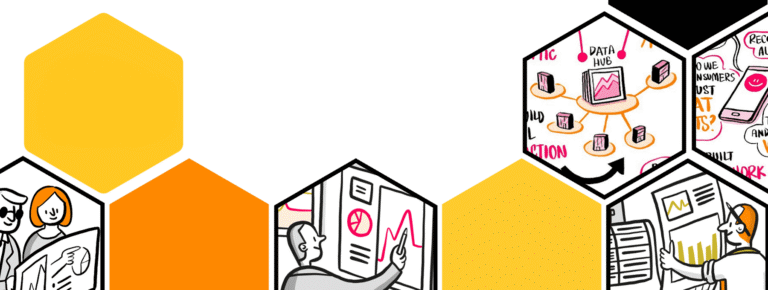With consumer’s expectations growing faster than ever, many brands are taking the steps of offering consistent customer experiences. However, bridging the gap between the digital and offline worlds has always been a challenge for marketing teams in the past. Today, data and technology have the power of helping teams do customer data integration just right. With the right approach, you can connect those two historically disjointed dots much faster and better than ever before.
Indeed, if your business has both an online store and physical shops, this is a classic case where 1 + 1 equals more than 2. It’s not just about creating twice as many interactions with customers, it’s about providing the most meaningful customer experience at the right time in their journey. In this article, we highlight why synching digital data with physical stores matters, and what are the early requirements and main benefits of such a vision.
The challenge
The first and probably biggest challenge to solve is that, often, brick-and-mortar stores and ecommerce are seen as totally different channels. Above all, this leads to siloed data, resulting in fragmented in-store user experiences. In addition, offline and online data is typically hard to combine due to a lack of shared identifiers. Offline transactions tend to be recorded as anonymous, leaving any chances to connect both worlds far behind.
Companies might also feel like they have little insight into their customers’ behavior. Do they know what percentage of their customer interactions are digital, for example? And do customers in stores know about the brand’s ecommerce activities? These are important questions to ask before tackling customer experience challenges, and without the right data, it can be hard to get a reliable answer.
The solution
When it comes to customer data integration, there is a simple solution to these challenges, namely using a Customer Data Platform. Otherwise called CDP, this software platform allows brands to consolidate all of their customer data into one place, making that data actionable for the whole organization. As a result, a CDP can create a bridge between both worlds, allowing your brand to really hone in on the customer and their journey, regardless of the channel.
Now let’s be honest, customer data integration is not as easy as just sending all the info you have to the CDP. So, you need a data strategy that allows you to connect those dots properly, with the right data captured from the beginning. This will help form a unified profile and let your brand truly be customer-centric.
What’s the trick, you ask? It can be as simple as encouraging your users to authenticate in any touchpoints they may have with your business. For instance, try to motivate your in-store customers to sign up for your loyalty program, newsletter or to receive their receipt via email when buying in your store. A specific example could be asking existing customers, who already have a rewards membership, if they’d also like to receive your monthly newsletter, which might have inspiration, new products and additional discounts. As you already have their email address and they only need to confirm their information, not give out new information, they will be more inclined to say yes.
Those easy steps will convert your prospects and anonymous buyers into identified buyers. Consequently, you will know who that customer is. You are getting closer to stitching together their online and offline behaviour right into the CDP. And that means you can communicate more efficiently with your customers, provide them with personalized recommendations and/or save them time when contacting you. In fact, let’s have a look at a few practical benefits of customer data integration below.
The benefits
There are many benefits to customer data integration that can create a true omnichannel strategy. As a result, it will translate into a more consistent customer experience and increase lifetime value down the line.
In practice, there are also many valuable use cases for the staff standing behind your counters. Here are some easy, yet effective examples that show the importance of online data for a customer’s offline experience:
Be personal
Greet existing customers with their name when at the counter.
Recommend the best product
Use AI to promote the recommended best product, based on online and offline, to someone browsing in your store.
Invite them inside
Push mobile notifications whenever a customer acquired online comes close to one of your locations.
Guide them through
Enable push notifications to guide a customer to the section of your stores that makes the most sense for their needs and previous purchasing behavior.
Offer relevant incentives
Print a relevant offer at the back of their ticket, based on their online and offline purchase history as well as the propensity to buy.
Conclusion: break down data silos and make the most of customer data integration
Ecommerce and brick-and-mortar stores each have their own advantages. For instance, if a customer knows precisely what product they are looking for, they might find it more easily on your ecommerce website. If, however, they want to discuss the options with an expert, perhaps they’d be more inclined to visit a physical store. Each of these scenarios offers different methods for data collection, and the ideal solution is often one that harmonizes and synchronizes data from all channels.
That’s why it is crucial that brands take a look at their customer data integration and take the step to integrate their customer journey between digital and offline touchpoints. The challenges can be tackled with the help of a CDP and the right data strategy. In conclusion, aligning touchpoints will allow your brand to deliver on a more consistent and seamless user experience, leading to stronger retention, customer lifetime value and ultimately higher revenue.
Want to learn more about CDPs and what they can offer your business? We’ve made a handy overview right here. If you have any questions or want to know how to set up a solution that works for your business, our team is happy to have a chat.







